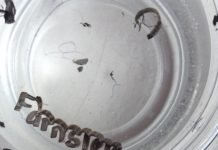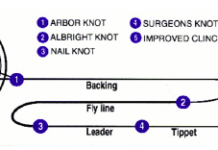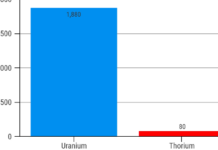Now there is a device to detect the sinkhole that can eat your car, the broken pipe that can pollute your neighborhood and even the secret tunnel running under the border. Entech Engineering Inc., a St. Louis based company, says that their instrument can detect damaged pipes or smuggler’s tunnels as deep as 50 feet.
 Using infrared sensors to see changes in temperature of less than a hundredth of a degree, Entech is able to see through the ground up to a reported 50 feet. Each sensor has an estimated cost of $125,000 and you can only rent their services, the sensors aren’t for sale.
Using infrared sensors to see changes in temperature of less than a hundredth of a degree, Entech is able to see through the ground up to a reported 50 feet. Each sensor has an estimated cost of $125,000 and you can only rent their services, the sensors aren’t for sale.
The sensor can be mounted on a helicopter, vehicle, or even a hand held device, says the company. The infrared sensor records differences in temperature and creates a visual representation of what it sees in the form of a thermograph.
Beneath the first few feet of earth, the ground stays at a constant 55 ºF. The sun warms the earth’s top layer of soil to above eighty degrees, any empty spaces that may exist below will act as natural insulators between the lower and upper soil temperatures, just like the space between to panes of window glass. These empty spaces therefore maintain a different temperature from the surrounding soils. The fact they retains a different temperature even when the surrounding soil has changed allows the infrared sensor to see them clearly.
On a cold day, it would work just the opposite the earth would remain at 55 ºF while the surface would be colder, again causing different temperatures in the soil and any empty spaces. The same idea holds true if you look at your roof after a fresh snow. Anywhere the snow has melted shows a warm spot, while anywhere the snow remains shows an area with good insulation.
One of Entech’s first contracts was with St. Louis Metropolitan Sewer District to survey areas of North St. Louis. They found so many leaks and breaks that the repairs took years, says Gary Weil, founder and president of Entech. Even if the street shows no signs of an imminent collapse, an impending sinkhole would be very evident in the thermograph according to Weil.
Weil stated that Entech has also successfully used this technology for tunnel detection on the U.S.-Mexico border. With the helicopter mounted sensor flying at over 2,000 feet, they were capable of covering a distance of 2.5 miles in less than 15 minutes. To search the same area by hand would take the use of high strength microphones to detect sounds of digging or vibration sensors. This could take a week or more, and might completely miss the tunnel if it were already completed and insulated from sound and vibration.
Since 1999, through careful inspection of British Petroleum’s pipelines running underneath there refinery, Entech has found potential leaks about every 128 feet. This has saved 90% of the costs associated with pipeline leaks. That translates into millions of dollars for British Petroleum.
At times, it may be either not cost prohibitive or to environmentally sensitive to just dig until problems are found. Roadways can have many different utilities running under them. Many empty lots also have unused fuel tanks lying below. Entech is especially adept at detecting these types of possible hazards.
Entech says their technology saves clients money by avoiding exploratory digging. Although they are guarded as to how exactly their technology works so well, Weil told The St. Louis Post Dispatch in a recent article that they are five years ahead of their closest competition.














Well… that was a great article:good